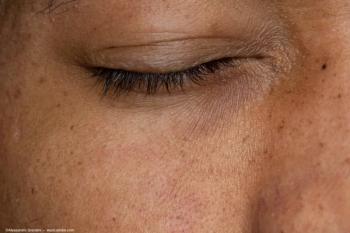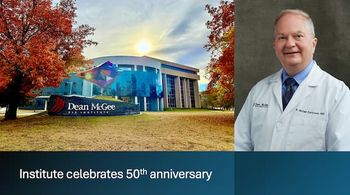
A reviews of the TEASE-1 clinical trial with Benjamin Bakall, MD, PhD
Key Takeaways
- TEASE-1 trial showed gildeuretinol significantly reduced atrophic lesion growth in Stargardt disease by 21.6% compared to untreated patients, with a strong safety profile.
- Gildeuretinol is part of a comprehensive clinical program, including trials for different stages of Stargardt disease and geographic atrophy secondary to AMD.
The TEASE-1 trial reveals gildeuretinol's potential to reduce vision loss in Stargardt disease, offering hope for future treatments.
The TEASE-1 clinical trial examined gildeuretinol in 50 patients with Stargardt disease. Data from this trial was presented at the Association for Research in Vision and Ophthalmology (ARVO) annual meeting, which was held in Salt Lake City, Utah. Ophthalmology Times caught up with Benjamin Bakall, MD, PhD, Director of Clinical Research at Associated Retina Consultants, and Clinical Assistant Professor at University of Arizona College of Medicine – Phoenix. Bakall’s presentation at the ARVO meeting was titled, “Safety and efficacy of oral gildeuretinol for Stargardt disease: TEASE-1 trial.”
Note: The following Q&A has been lightly edited for clarity.
Ophthalmology Times: Could you share some key data points from the TEASE-1 trial?
Benjamin Bakall, MD, PhD: The TEASE-1 study was a randomized, double-masked, placebo-controlled trial of gildeuretinol in 50 patients with Stargardt disease, an inherited rare, progressive condition that leads to irreversible central vision loss and often impacts young adults and children. The primary endpoint was the growth rate of atrophic lesions from month 6 to month 24 comparing patients on gildeuretinol vs. untreated patients. This control group was pre-specified to include placebo and natural history.
In the study, the primary endpoint was met. Findings from TEASE-1 showed that daily oral gildeuretinol demonstrated a statistically significant reduction in the growth of atrophic retinal lesions in Stargardt disease by 21.6% versus the untreated group (p<0.001). Gildeuretinol was well tolerated and demonstrated a consistent safety profile across the TEASE program to date. Gildeuretinol is not a visual cycle modulator – consistent with that there were no signs of delayed dark adaptation, night blindness or chromatopsia. There were no signals of hyper or hypovitaminosis A. There was 1 case of papilledema in the 24mg cohort, as we recall all patients after month 12 continued on 14mg only. This patient, after resolving, continued therapy in the study.
OT: How can these results inform future trials around oral gildeuretinol?
Bakall: I find these results extremely encouraging and hopeful that we may have a new treatment soon. There are additional ongoing trials of gildeuretinol currently underway. TEASE-1 is part of a comprehensive clinical program for gildeuretinol, which covers all stages of Stargardt disease (TEASE studies), as well as geographic atrophy (GA) secondary to age-related macular degeneration (AMD) (SAGA study). In addition to the TEASE-1 data I presented at ARVO, there is an ongoing study of gildeuretinol in early-stage Stargardt called TEASE-3. A study in intermediate stage Stargardt disease is expected to read-out in 2025 (TEASE-2). There also is an extension study ongoing for Stargardt patients (TEASE-4), as well as a completed Phase 2 clinical study in GA secondary to AMD (SAGA).
OT: How do oral medications reduce treatment burden or increase medication adherence?
Bakall: There is no current approved treatment for Stargardt disease, so an oral therapy would be a significant advancement for these patients. Regarding the broader retinal therapeutic landscape, many treatments we currently use for other retina conditions require intravitreal injections, which can cause some temporary discomfort as well as anxiety that can ultimately lead to hesitancy amongst patients. When we look at potentially having the opportunity to treat Stargardt disease – a condition which so profoundly impacts children and young patients – having an oral therapy would avoid the burden inherent in intravitreal injections.
OT: Do you see a future of ophthalmology with an increased number of oral medication options?
Bakall: I certainly hope so. The challenge in degenerative retinal disease is getting the therapy into the retina, which is why there are no existing oral therapies for Stargardt or AMD.
OT: What do you wish other ophthalmologists knew about Stargardt disease?
Bakall: Familiarity with this rare genetic condition is paramount to enable a faster diagnosis, since it is a progressive eye condition that leads to irreversible vision loss.
In Stargardt disease, over 95% of the people have pathogenic variant of ABCA4 gene that leads to an impaired transport of vitamin A in the retina. As a result, vitamin A accumulates, and forms dimers that create toxicity for the cells of the retina. This leads to loss of central vision. Diagnosing this disease early is important to best support and treat these patients.
OT: Is there anything else you would like to share about this trial, the data, or Stargardt disease?
Bakall: Stargardt disease affects about 30,000 people in the United States and is the most common form of inherited juvenile macular dystrophy. Typically, the younger a person is when diagnosed with Stargardt disease, the faster the progression to legal blindness. There is significant high unmet need in Stargardt disease, a condition that can progress progresses to irreversible vision loss, and for which there is no therapy today.
It can be frustrating as a physician to not have any tools to fight Stargardt disease. Promising data and ongoing clinical studies give me hope in what the future may hold for patients living with retinal diseases.
Newsletter
Don’t miss out—get Ophthalmology Times updates on the latest clinical advancements and expert interviews, straight to your inbox.


















































.png)


